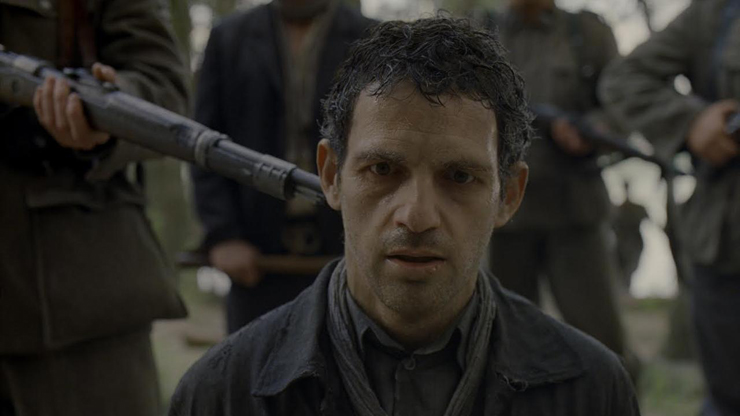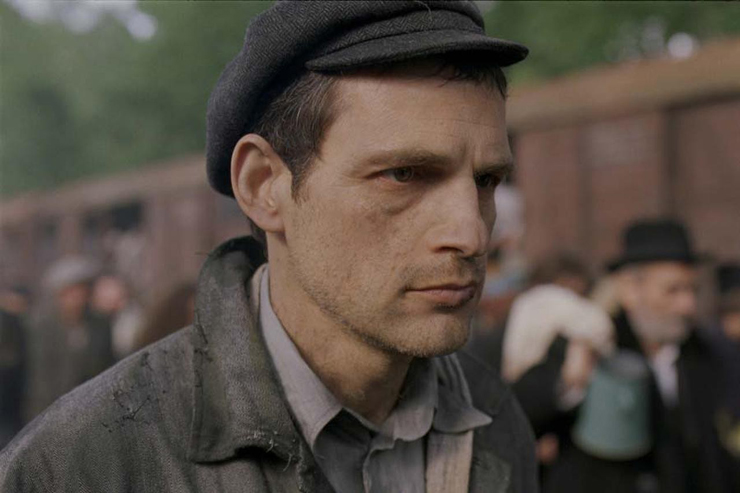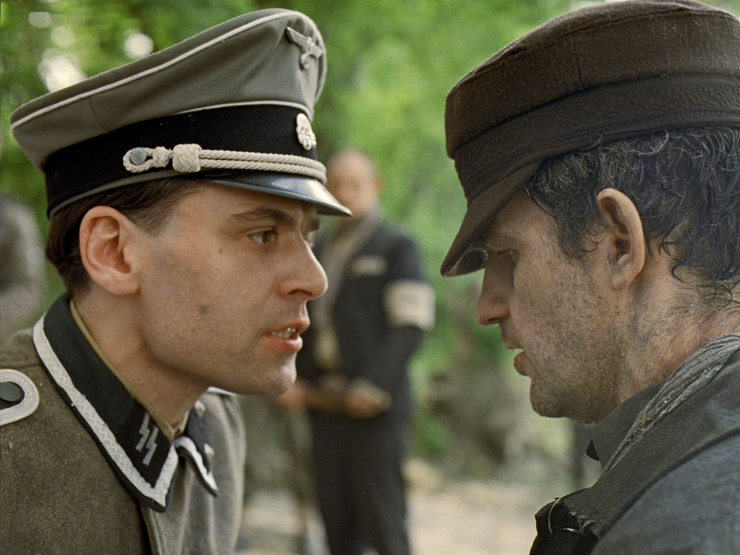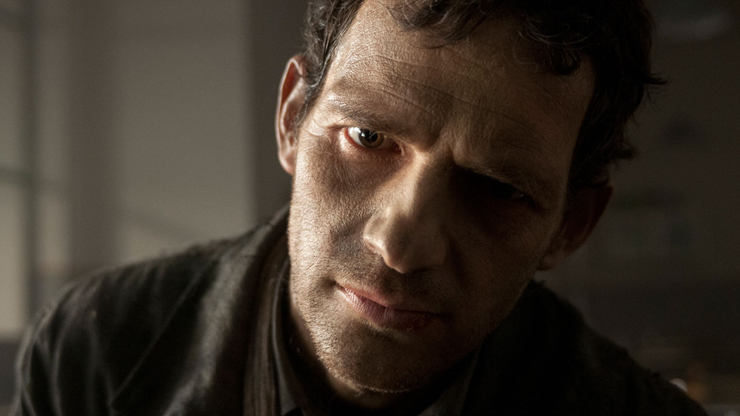
Geza Rohrig.
Some filmmakers let talking heads talk about it. Some tackle the horrors head on. And others dramatize its psychological scars in a present-day setting.
There's no one way to depict the Holocaust and its ripple effects on film, and in the harrowing Son of Saul, Hungarian director László Nemes shows us an altogether different approach: first-person point of view. When I say “film,” I mean that literally. Shot in 35 mm, in the square-shaped Academy aspect ratio, Nemes boxes viewers in, forcing them to feel the claustrophobia, the all-encompassing despair that comes with viewing the relentless barrage of death camp atrocities from one person's perspective.
That would be Saul Ausländer, played by New York-based actor and poet Géza Röhrig in a galvanizing performance that should have gotten more notice stateside. He's instrumental in holding together Nemes' daunting high-wire act, and it's hard to imagine the movie, astonishingly the director's debut feature, being as affecting without the actor's near constant presence. (The film walked away with the Grand Prix at last year's Cannes Film Festival and is the front-runner for this year's Foreign Language Film Oscar.)

Geza Rohrig.
Saul's lengthy opening shot establishes Nemes' m.o. right away. We're outdoors on a sunny day. The bodies, first seen as fuzzy dots, approach the camera until they're in focus. We follow the prisoners walking indoors and then being led into an enclosed space. It's not until the heavy doors are locked shut and the screaming and banging begins that it becomes clear what is happening. “You can trust me,” Nemes appears to be telling us. “The most unspeakable sights will remain off camera.”
Instead, the dialogue-free shot ends with a closeup of Röhrig. You better get used to that ashen, weary mug. Son of Saul unfolds as a series of extended handheld shots alternating between the star's face and what his resourceful, desensitized character sees. Nemes places the weight of the film on his shoulders, and Röhrig, who resembles the young François Truffaut, rises to the challenge.
The name is never uttered out loud, but Son of Saul is set in Auschwitz, and the titular character is a Hungarian member of the Sonderkommando, camp prisoners tasked with disposing of gas chamber victims, which includes rummaging through their coats for valuables. On this day, however, Saul witnesses what amounts to a miracle. Under a pile of bodies, a young boy is still breathing. Moments later, however, guards take the survivor away and a doctor holds the victim's nostrils shut the way one would put pressure on a bleeding cut. Like much of what follows, the scene is tough to watch, but Röhrig, whose deadened expression briefly shows signs of life as he watches another life being sniffed out, acts as our anchor, and sometimes a shield, as he navigates this minefield.

(From Left): Christian Harting, Geza Rohrig.
Saul feels a connection to the boy, and then takes it upon himself to find a rabbi to give him a proper burial. Nemes devotes the rest of the film to showing his title character's valiant efforts to reach that goal. The filmmaker's rigorous mise en scene achieves a raw immediacy. This living hell is dank and grimy and filled with the stench of perspiration and burning flesh. You feel the director pressing his thumb on your forehead, but this is the kind of ordeal where such unrelenting oppression is warranted. This is a blistering scab of a movie, and boy, do I mean this as a compliment.
It's remarkable how Son of Saul maintains a consistent level of tension. It vividly etches the Sonderkommandos' totemic structure where only the wiliest, most cunning can endure. At least, for as long as their commanders wish to keep them around before they feel a need to do some downsizing. If there is a drawback to the film's narrow focus, it's the certainty that we're seeing characters whose fates are already sealed. Their slim hope for survival, dramatized in a planned revolt that dovetails with Saul's own quest, can only have one outcome, but it's a testament to Nemes' prowess that he keeps our interest, and earns our empathy, all the way through.

Geza Rohrig.
The director, though, is so devoted to throwing the viewer into this maelstrom of hopelessness that I sometimes wished for a little more narrative clarity. The disorientation is, of course, intentional, but it's occasionally so pervasive that it's sometimes difficult for viewers to get their bearings. One can totally envision Belgian directors Jean-Pierre and Luc Dardenne executing Nemes and Clara Royer's spare screenplay with even more precision.
But even when Nemes, aided by Mátyás Erdély's skillful camerawork, calls attention to himself, there's little doubt that Son of Saul is a starkly realized tour de force, for the people behind the camera as well as the onscreen talent keeping it afloat. Near the end, there's a closeup of Röhrig so poignant that, even though we know what's coming, we're finally able to breathe a sigh of relief. And that's what ultimately makes Son of Saul so special. It's touched by mercy.
Son of Saul is now showing at the Tower Theater in Miami, Cinema Paradiso in Fort Lauderdale and Living Room Theaters in Boca Raton. It's scheduled to open later this spring at the Miami Beach Cinematheque.




